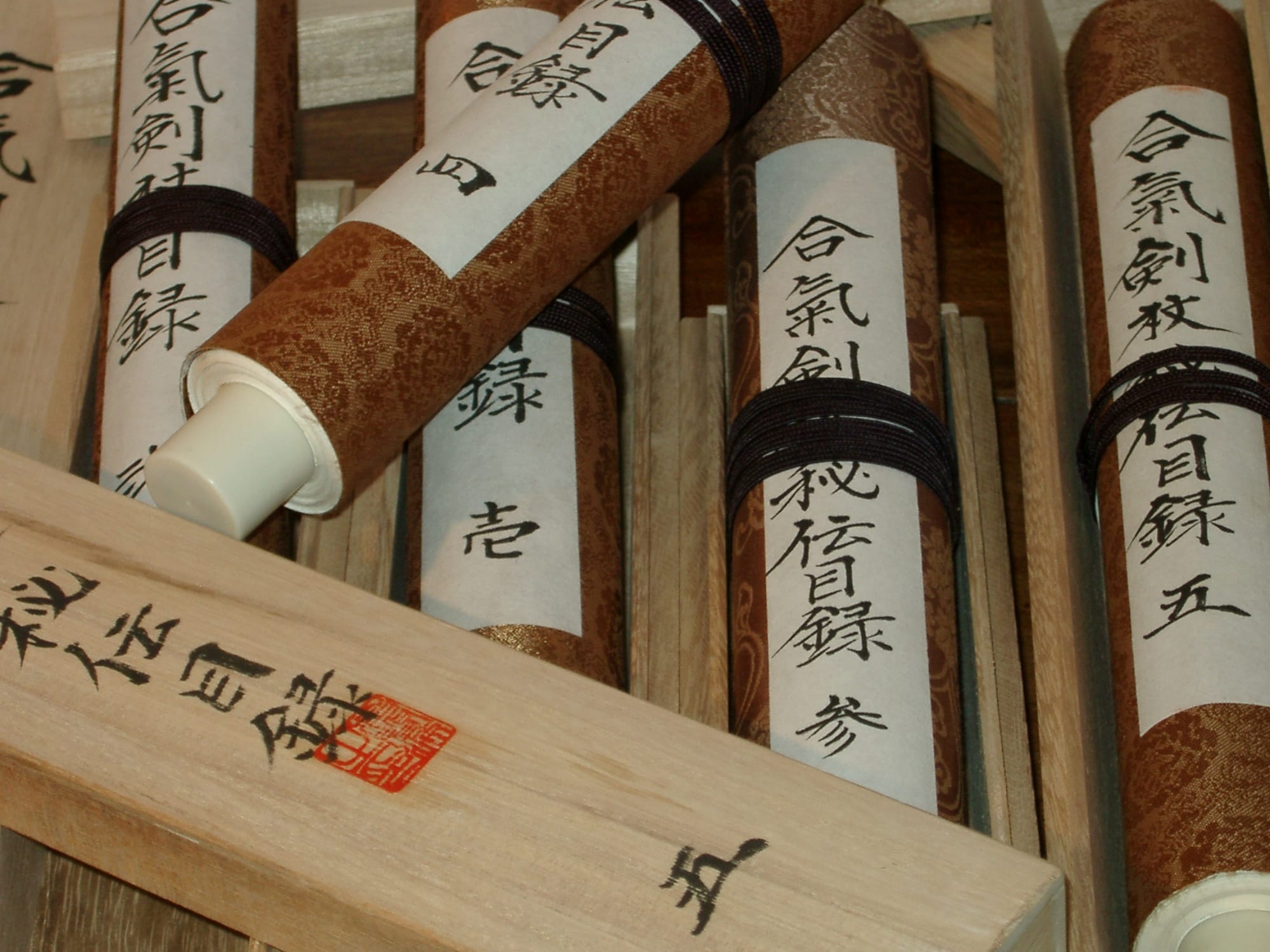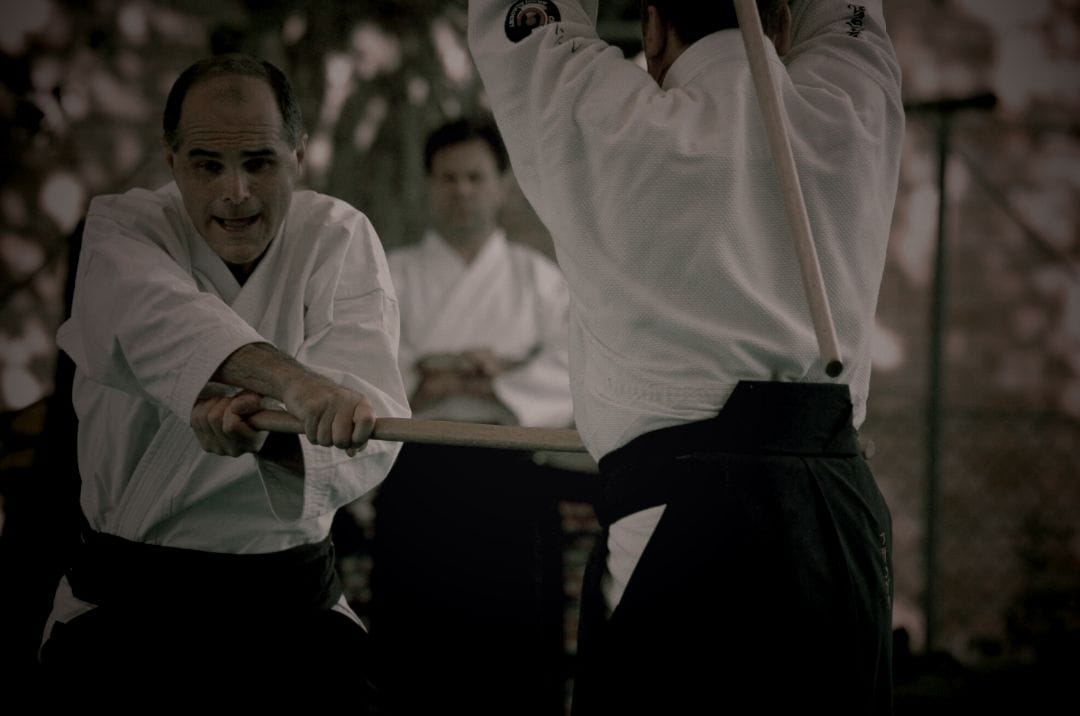This article was originally published in the magazine - Karate Bushido No. 231 - January 1996.
Note of presentation (2025) - Three decades have passed since the publication of this article. A generation has left, a new generation has taken over the management of Aikikai affairs. Kisshomaru Ueshiba has died, succeeded by his son Moriteru Ueshiba, who is no longer Waka Sensei (Young Master) but Doshu (guardian of the Way), while Moriteru's son Mitsuteru has become the new Waka Sensei, and will soon succeed his father. It's a family business, the Aikikai is a family business. But Aikido is not a family business, and the world is mistaken in thinking that the name of Ueshiba is a guarantee that the path will not be strayed from. Because nothing has essentially changed: the Aikido passed down from Kisshomaru to Moriteru, then from Moriteru to Mitsuteru, is not the aikido of the father, grandfather and great-grandfather Morihei Ueshiba. The Ueshiba family has diverged from the Founder's Aikido from the outset, that is how it is and that is what this article is about.
Note from Karate Bushido (1996): The term Aiki-Kai, which can be translated as Aiki Society, refers to the organisation created in 1948 in Tokyo to promote Aikido. This organisation was placed under the direction of Kisshomaru Ueshiba, the founder's son. Over the years, Aiki-Kai has developed a particular form of Aikido defined as the ‘official’ form of Aikido. The expression O Sensei refers to the Founder Morihei Ueshiba, Doshu refers to his successor, his son Kisshomaru Ueshiba, and Waka Sensei refers to Moriteru Ueshiba, son of Kisshomaru and grandson of Morihei.
In the autumn 1990 issue of the magazine Aiko, an Italian journalist asked Master Morihiro Saito if there was a difference between O Sensei and his son. The answer was wonderfully Japanese:
"You see, the Founder was a genius in the martial arts, but if he had taken care of administration the Aikikai would have gone bankrupt in a short time. Well, Kisshomaru was the exact opposite of O Sensei, and he deserves credit for considerably developing the Aikikai."
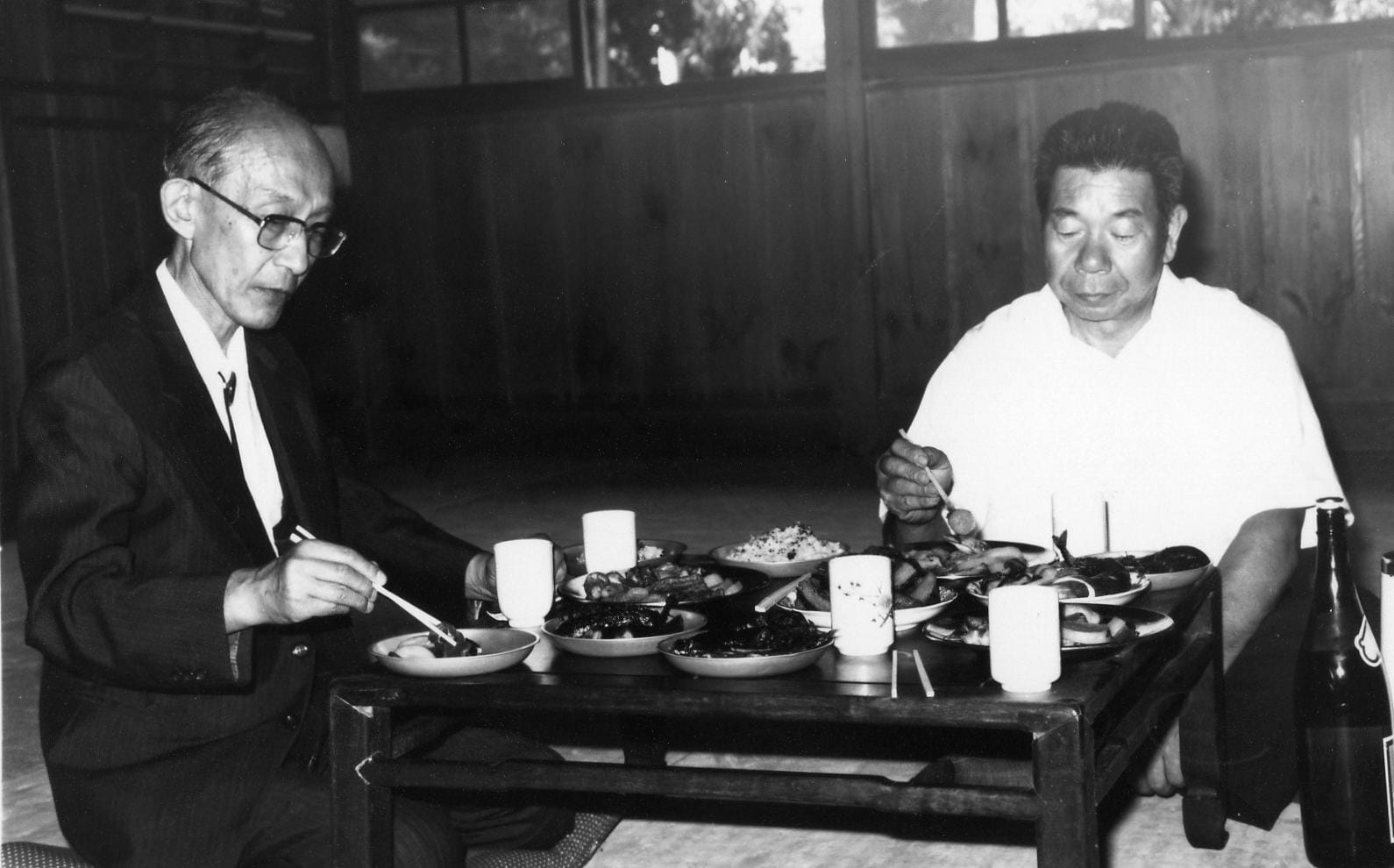
Each man finds his place in the wise organisation of the world. It was up to O Sensei to create Aikido, and it was up to his son Kisshomaru to effectively manage the structure necessary for the dissemination of Aikido in Japan and throughout the world. Everything was fine that way. But whether O Sensei meddled in administration or the Doshu dealt with technique, it could not be done without upsetting the natural order of things. Men have different natural qualities that predestine them to one path rather than another. It is no insult to anyone to recall this reality.
In 1932, when Kisshomaru Ueshiba was around twelve years old and O Sensei was wondering about the future of his school, he adopted Kiyoshi Nakakura, one of Japan's greatest kendokas, and gave him the name Morihiro Ueshiha. In Japanese, mori means to protect, to guard. It is likely that O Sensei saw in him the future Doshu of Aikido. But Nakakura declined the offer after a few years, returned to Kendo, which was his path, and became an undisputed master of the discipline. Much later, in the 1950s, O Sensei entrusted his son Kisshomaru with the responsibility of managing the Aikikai. But at the same time, he changed Master Saito's first name to Morihiro, awarded him 8th dan, and appointed him lifelong guardian of the sacred precinct of Iwama where Aikido is protected.

‘Primitive’ Aikido and ‘evolved’ Aikido
Kisshomaru Ueshiha, heir to the name, was therefore given the administrative management of the school, while Morihiro Saito was given the guardianship of the Temple of Aikido in Iwama (Aiki Jinja) and the guardianship of the technique. Kisshomaru was undoubtedly the right man to head the Aikikai. If the association is today the international reference for Aikido, it is indeed to him that it owes it. He fulfilled his task with talent. And Master Tadashi Abe - undisputed authority of Aikido - who knew his world well, used to say in his terse French: ‘Kisshomaru, bon fonctionnaire!' (Kisshomaru good bureaucrat).
But in order to achieve success, he had no choice but to put his own stamp on the technique. He thus entered a field that was not intended for him. And for forty years, although the Aikikai brandishes O Sensei's Aikido like a banner, in reality it has been propagating the Aikido of the Doshu. This statement may come as a surprise, but it is not gratuitous. It has even received official confirmation from Moriteru Ueshiha, grandson of the Founder and Kisshomaru's successor as head of the Aikikai, in an interview given to the magazine Budo in March 1995. The current Doshu, his father, writes:
What was originally (the art created by the founder) harsh and rude has been smoothed and rounded into more spherical techniques.
And his son Moriteru confirms:
The teaching that I pass on is that codified by the Doshu (editor's note: by his father Kisshomaru) in the 1950s. (...) O Sensei practised very direct forms, as he had learnt them. This very direct work, perhaps more abrupt, corresponded to the Aikido of an era and to his personal evolution. Over time, the techniques have become more rounded, with as little clash as possible.
The Aikikai creed is therefore clear: there was a primitive, clashing, brutal and unoriginal Aikido - the Aikido of the Founder O Sensei - and there is now an evolved, elaborate Aikido, with rounded and well-finished techniques, the Aikido of the Aikikai, ‘the classical form of Aikido’ according to Moriteru.
The unique Aikido is that of the master
I would never have made certain truths public if Moriteru Ueshiba, Director of the Aikikai and an emblematic figure in Aikido worldwide, had not officially made such an unrealistic judgement about the Aikido of the Founder, his grandfather.
It was certainly up to others, to my masters, to react to these remarks. They will not do so. They cannot do so by virtue of the oath of allegiance that binds them to the Ueshiha family, and consequently to the Aikikai. I do not have these constraints.
Waka Sensei, it is to you that I therefore choose to address myself here.
Not to the individual, of course, but to the symbol, to the representative of an idea of Aikido that is making its way around the world today, and that would like Aikido to evolve with the times. I defend precisely the opposite idea: the idea that there is one Aikido and that everything else is not Aikido, quite simply, that Aikido cannot evolve.
The single unique Aikido was developed by an exceptional man, O Sensei, after a long life of effort constantly directed towards the same goal. This Aikido is One because the principles on which it is based are the same principles that operate in the Universe. And every principle is intangible. This point must be absolutely clear. No one can make it so, for example, that the sum of the angles of a triangle is not equal to 180°, because it is a given of the universal system. From all eternity, the sum of the angles of a triangle is equal to 180°, and for eternity it will remain so. That is what a principle is.
A discipline based on immutable principles
Morihei Ueshiba's Aikido is based on such principles. That is why it is Universal, that is why it is immutable. Of course, the Universe is dynamic. Who would dare to deny that its forms are constantly changing? But this permanent revolution of forms is organised around unchanging principles.
The components of the Universe, as different as a man, a snail and a sunflower, nevertheless have a common organisational factor: the logarithmic spiral of value 0.618 which regulates the growth of DNA coils, the formation of snail shells and the rolling up of sunflower seeds. The same goes for Aikido. There are ten thousand individuals, there are ten thousand different shiho nage, because all individuals are different. Of course, but each of these ten thousand must respect the logarithmic spiral in the execution of the movement. Otherwise there is no shiho nage, otherwise there is no Aikido. This constant cannot vary, it cannot change, because it is a principle. That is what Aikido is, and that is why Aikido cannot evolve. If it could be modified, it would mean that it had never been the expression of eternal principles.
O Sensei's Aikido is Aikido for ever and ever, and the Aikikai cannot change it.
Weapons training

Moriteru states:
‘... weapons training has indeed evolved. At the Aikikai, weapons training is understood as a study of unarmed defence against a partner armed with a ken or a jo.’
I would like to point out that this study is called tachi dori and jo dori in Aikido, and that it is more akin to empty-handed techniques than to weapon techniques. In any case, it cannot be confused with the teaching of Aiki-ken and Aiki-jo.
The fact that the Aikikai sees weapons training as a form of empty-handed practice against a ken or a jo simply means that the Aikikai has shifted the meaning in this respect.
The Aikikai has reduced the full technical and pedagogical wealth of weapons work to tachi dori and jo dori alone. It's a bit like removing two strings from a violin and telling the musician: ‘You'll play just as well with the two remaining strings.’
But you go even further, Waka Sensei, by saying:
‘The teaching of weapons as such has no place, and it can be said that it is not taken into account at the Aikikai, because it can be considered, for example, that weapons work practised in pairs is no longer Aikido.’
So we can consider, for example, that O Sensei Morihei Ueshiba, the founder of Aikido, when he practised weapons with a partner, was not practising Aikido. So what was he practising, please? Kendo? Jodo? No, young master, he practised Aiki-ken and Aiki-jo. O Sensei practised Aikido whether or not he had a weapon in his hands, and whether or not his opponent had one. You see, I must confess an error which you are allowing me to correct today.
Beliefs and shortcomings of the Aikikai
The Aikikai has always refused to recognise the teaching of Aiki-ken and Aiki-jo as coming from O Sensei, as transmitted by Master Saito. And for a long time I believed that this was the result of political calculation. Since no one at the Hombu Dojo was able to teach Aiki-ken and Aiki-jo, it is obvious that such recognition would have put the Aikikai in an embarrassing situation. Well, I was wrong. I had credited the Aikikai with a political cynicism that it does not have, and I apologise for that here. I have realised today that the Aikikai is perfectly sincere. If the Aikikai does not recognise the teaching of weapons, it is not because of any calculation. It is simply because the Aikikai knows nothing about Aiki-ken and Aiki-jo, and therefore has no idea of the function of working with weapons in pairs in Aikido.
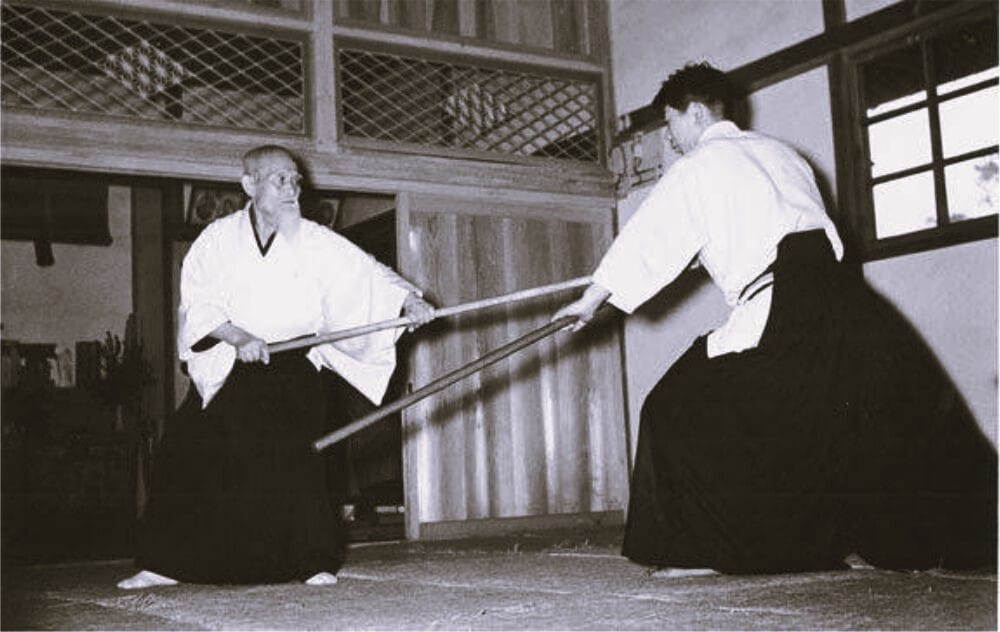
The Aikikai is like a child who lives in the desert and denies the existence of the ocean simply because he has never seen it. The Aikikai truly believes that two men armed with a sword can only do Kendo and that two men armed with a jo can only do Jodo. That is why, logically, the teachers at the Hombu Dojo take Kendo and Jodo classes when they want to learn the weapons. And I am not making any claims that I cannot prove. These are my arguments.
The evidence
During his youth, Morihei Ueshiba received instruction and influence mainly from two important figures. The first was Masakatsu Nakai, master of the famous Yagyu Shingan sword school. Morihei studied under him from 1903 to 1908, and received his very first certificate of mastery from him in 1908.
From 1915 to 1922, Morihei studied under Sokaku Takeda, learning the empty-hand techniques of the Daito school, as well as the spear of the Hozoin school and the sword of the Shinkage school, which Takeda taught and for which he awarded the master's diploma to Morihei in Ayabe in 1922.
This demonstrates that O Sensei, during his years of apprenticeship, practised weapons at least as much as empty-handed techniques, and this is an important first point.
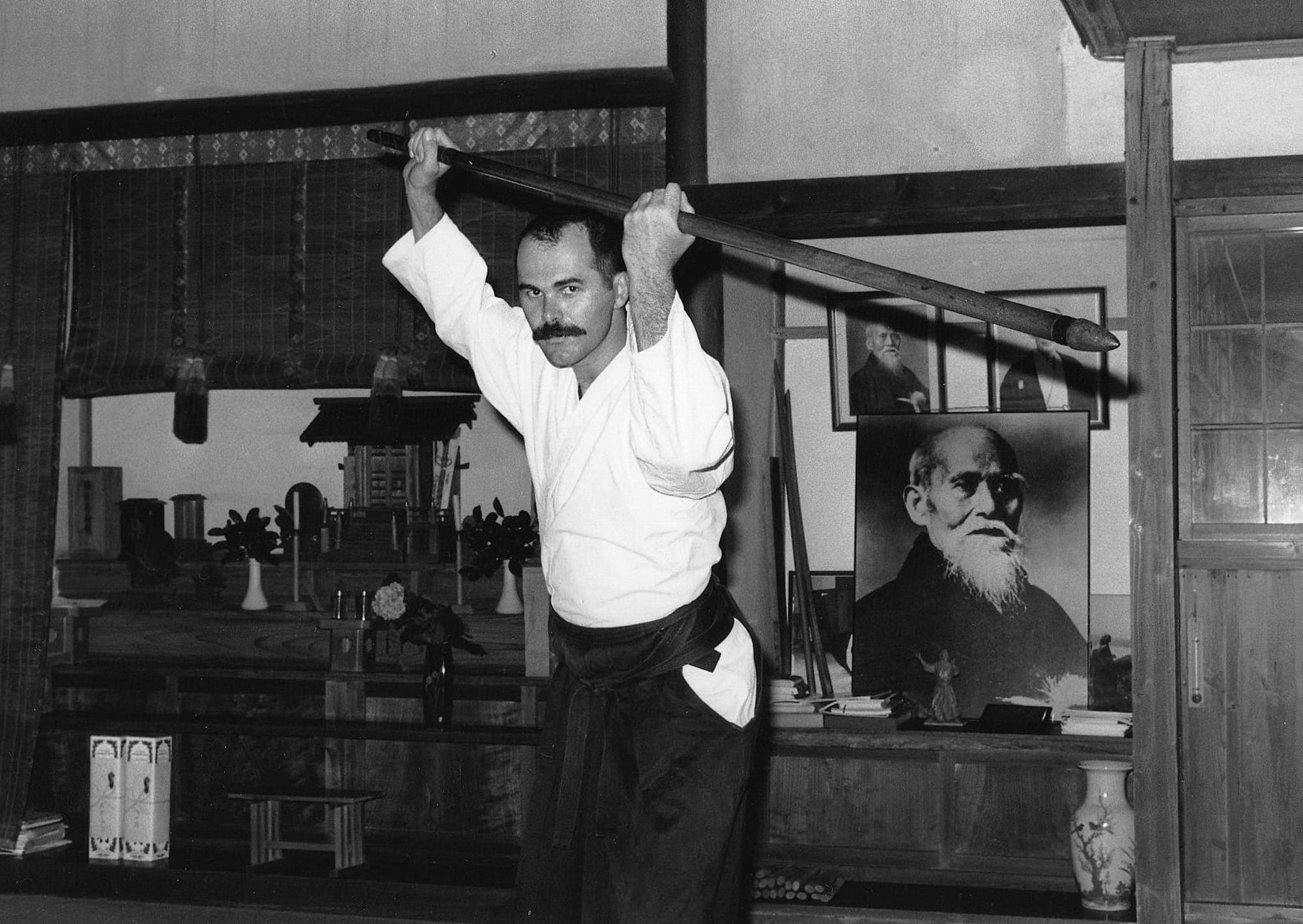
From 1919 to 1926, Morihei lived in Ayabe, in the Omoto-kyo community, where he was spiritually influenced by Reverend Deguchi, and gradually freed himself from the rigid technical framework of the teachings he had received until then. In particular, he broke with Master Takeda's Daito-Ryu by abandoning the shikaku (square) guard and preferring the sankaku (hanmi) guard used in the weapons techniques he had mastered. This is crucial. The triangular position of the feet, characteristic of Aikido and from which all Aikido is organised, is directly derived from the practice of weapons.
Today, by eliminating the practice of weapons from Aikido, the Aikikai is travelling in the opposite direction to the path taken by O Sensei in his progression.
O Sensei in Iwama
From 1927 to 1941, Master Ueshiba lived in Tokyo. Contrary to what you claim, Young Master, the art he taught was already profoundly original and no longer had much in common with ‘the very direct forms as he had learnt them’, to which you limit him. The documentary film shot in Osaka in 1935 on the premises of the Asahi newspaper is a powerful testimony to this originality. At that time, the art was still called Aiki-Budo but it was already Aikido. It did not need to be ‘rounded off’ as you think, it just needed to be integrated, meaning that ken, jo and tai jutsu were unified within the Aiki system. This work will be done from 1942 in Iwama.
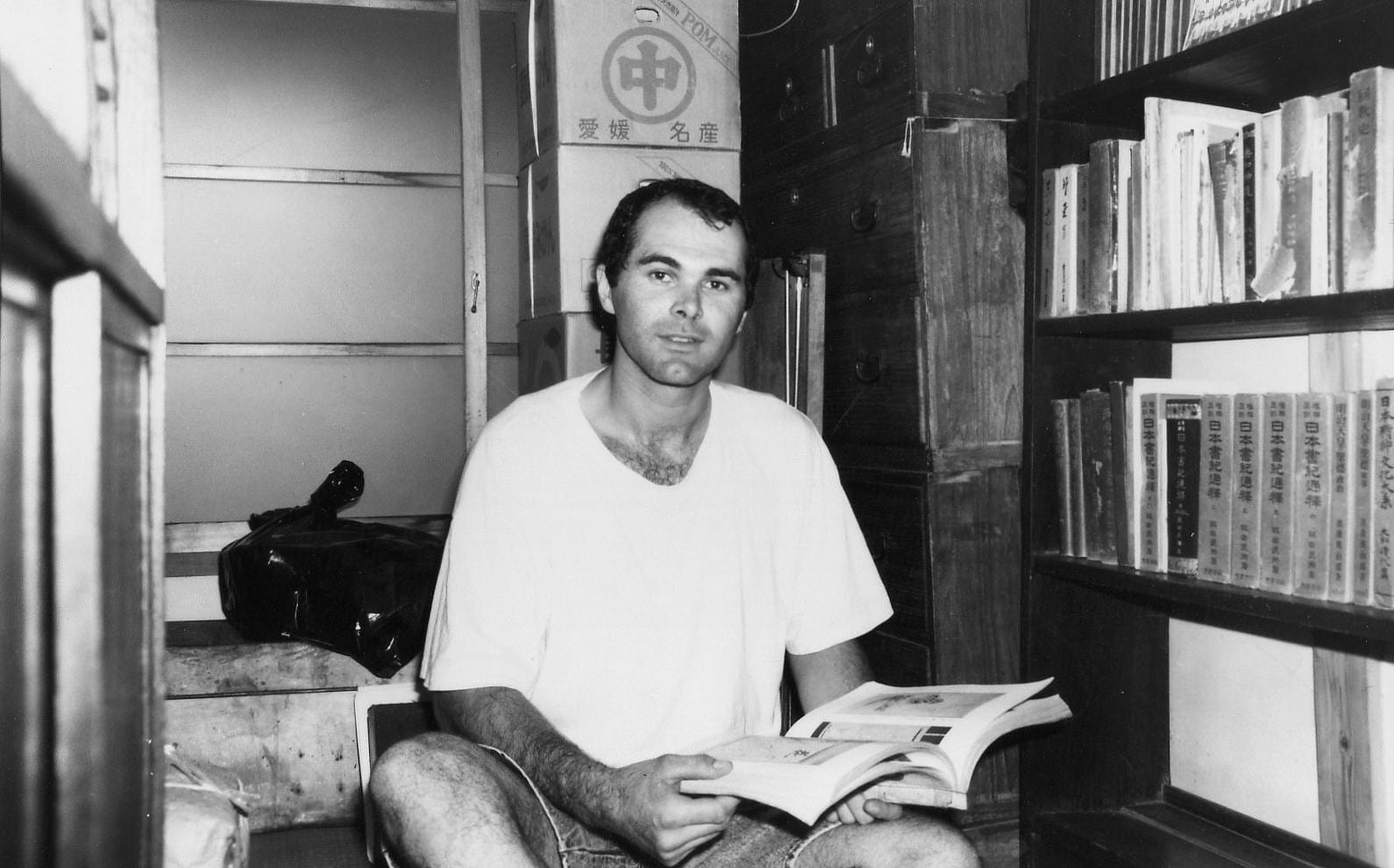
Because from 1942 until his death in 1969, O Sensei did not live in Tokyo as is often suggested, but far from there, in the small village of Iwama, in the prefecture of Ibaraki. This is where his wife lived, where he had his house and his dojo, and where he had the Temple dedicated to Aikido (Aiki Jinja) built at the foot of Mount Atago. Shouldn't this truth be told, given that it is so concealed in all the biographies of O Sensei?
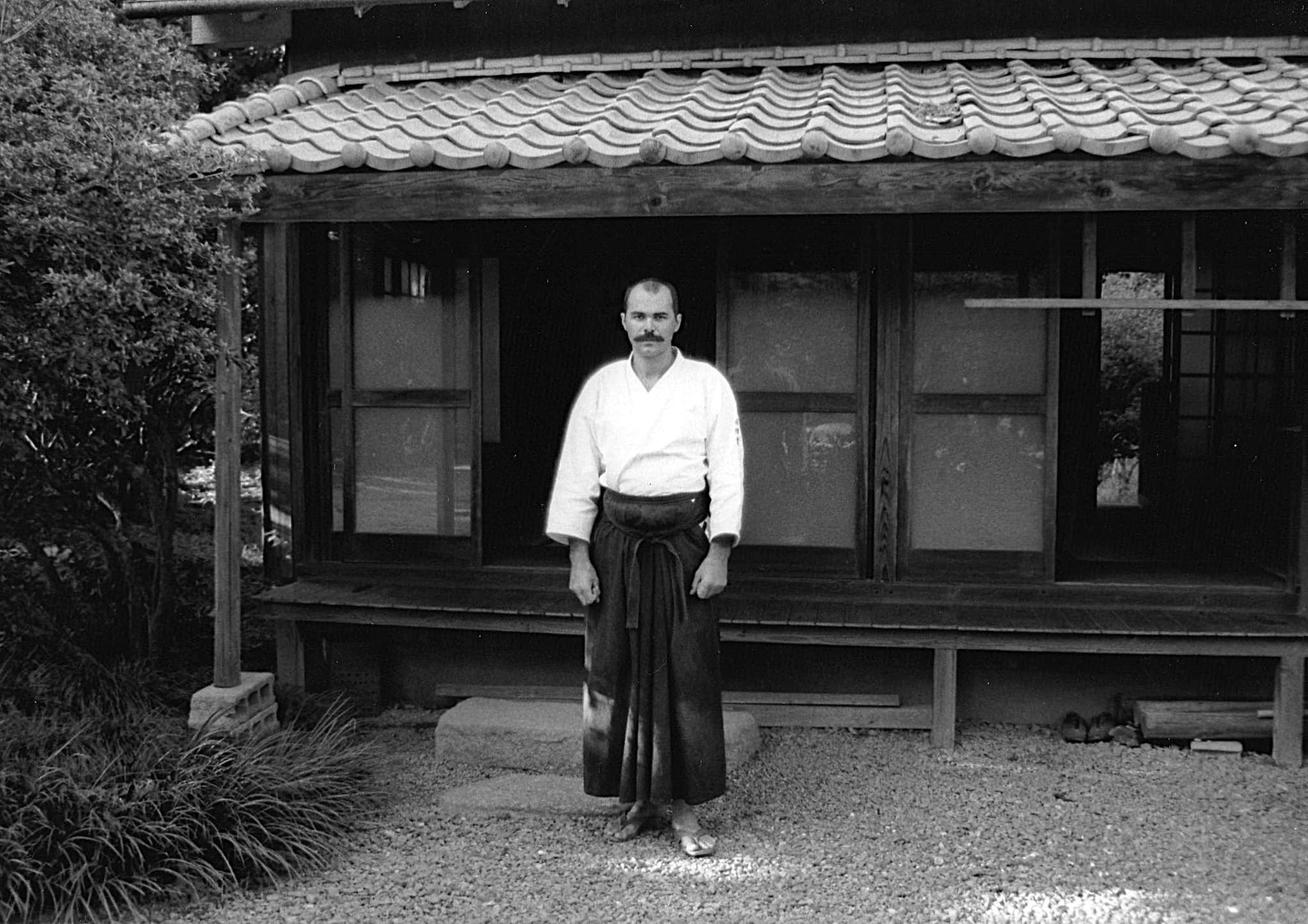
But the facts are stubborn: Morihei Ueshiba only taught at the Hombu Dojo, the ‘Aikido World Headquarters’ in Tokyo, on occasion, during a few visits to his son's home in the 1950s. He was paying a visit to the place, and he did not teach Aiki-ken and Aiki-jo there, reserving the practice of these arts for Iwama. Kisshomaru Doshu and the students of the Hombu Dojo could only catch a glimpse of O Sensei's Aikido. All the present-day Shihan are in fact students of the Doshu, not of O Sensei. None of them had any idea of what was happening in Iwama. None of them took part beyond a few occasional visits to the small village.
And yet O Sensei's message was clear. In 1942, he registered the term Aikido with the Japanese Ministry of Education, which was thus used officially for the first time. That same year, he named the group of buildings he had built in Iwama, according to the rules of Kototama and Sacred Architecture, Ubuya, which means ‘The place of birth’...
Based on these two major symbolic acts, I can state that Iwama was the birthplace of Aikido in 1942. At that point, O Sensei had a clear idea of what had been under development until then: the link (riai) between the empty-handed techniques and the weapon techniques of his Art. But even this understanding was only the first step. It was not enough for Aikido to be born, of course. Like a child coming into the world, Aikido still had to grow and reach maturity.
The Aikido triad
There you have it, Young Master, the immense and unrecognised work of O Sensei in Iwama between 1942 and 1969. Over these 28 years, Morihiro Saito served as his assistant on a daily basis for 23 years.
All the documents relating to this long period - all the films, all the photos, all the testimonies of the men and women who lived in Iwama with O Sensei for all or part of these twenty-eight years - attest to the Founder's intense research and creative activity, especially in the practice of Aiki-ken and Aiki-jo.
The truth, Young Master, is that in Iwama, your grandfather did not just improve a few details of Aikido. The truth is that in Iwama the Founder studied relentlessly, he searched, modified, developed and organised the techniques according to a principle that I fear you are not even aware of. In a word, he created Aikido, while in Tokyo your father was codifying and prematurely teaching what he had understood, what he believed to be Aikido, and what was still missing the essential.
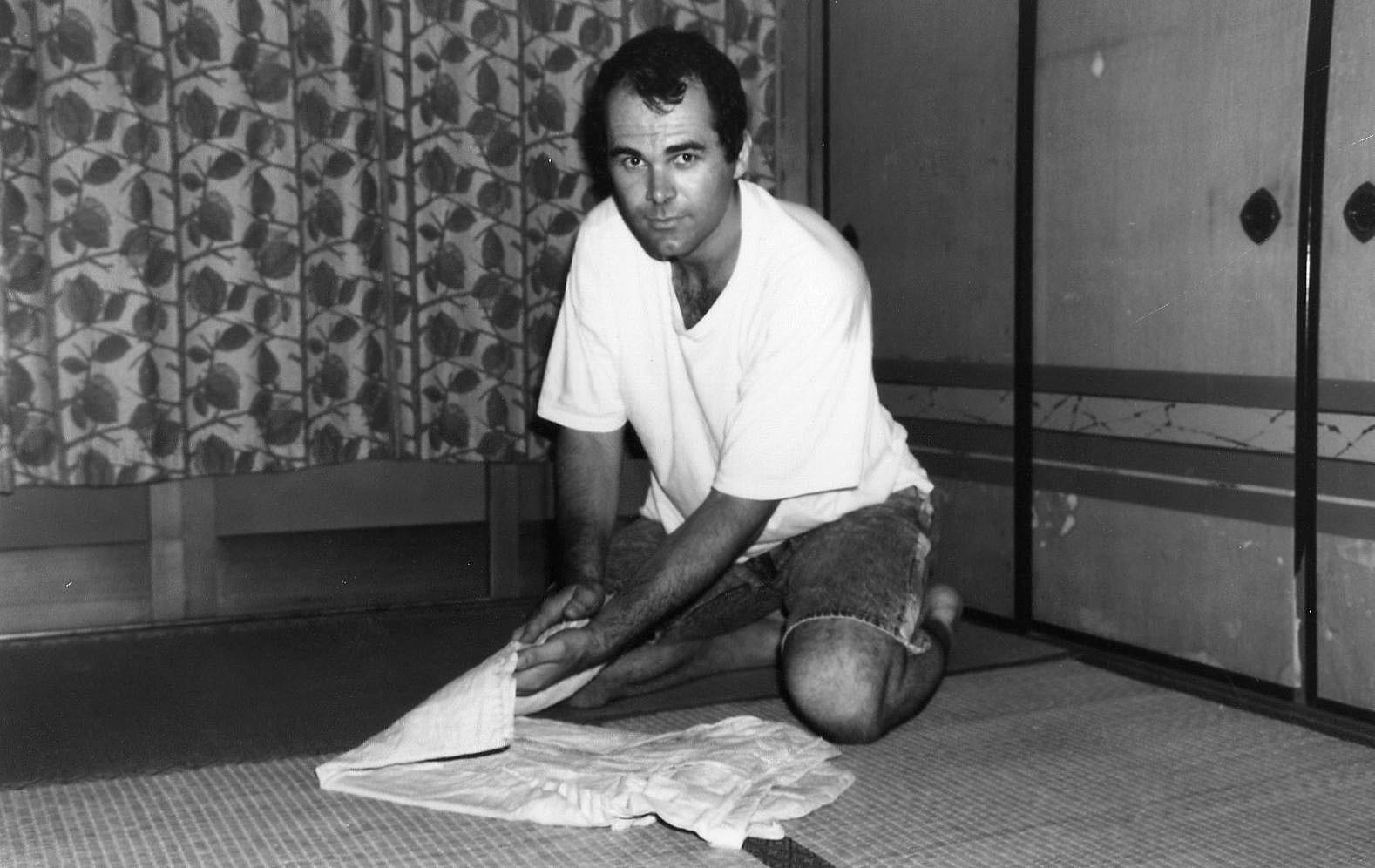
The one and only Aikido, which was perfected by O Sensei in the last twenty-eight years of his life in Iwama, is a triad: it is a communion, an organic interdependence between the three parts of a single being. These three parts are Aiki-ken, Aiki-jo and Tai-jutsu. Aikido is the harmonious dynamic balance of these three elements, which explain each other because they are united by a deep common rational structure. This structure is what makes Aikido original, and what makes it different from a simple combination of independent disciplines, because a syncretism will never be a synthesis.
An incomplete Aikido
What would you think of a geometer who would remove two of the three vertices of a triangle, and continue to call the remaining figure a triangle? The Aikikai is this geometer if he thinks he can remove Aiki-ken and Aiki-jo from Aikido, and continue to call what remains Aikido. What remains is nothing but a quaint residue. The Aikido that your father teaches, that you teach, the Aikido of the Hombu Dojo, the Aikido that the Aikikai spreads throughout the world is not a modern Aikido, it is not an evolved Aikido, it is a crippled Aikido, a truncated Aikido. It is not the Aikido of O Sensei, it is quite simply not Aikido.
Do not count on me, Young Master, to ever fall in line under this banner.
Post Scriptum: I have added the last sentence above to my text from thirty years ago. I could have written it at the time. I won't budge from this position. It is my loyalty to my master Morihiro Saito, my loyalty to his master O Sensei Morihei Ueshiba, my loyalty to Aikido.
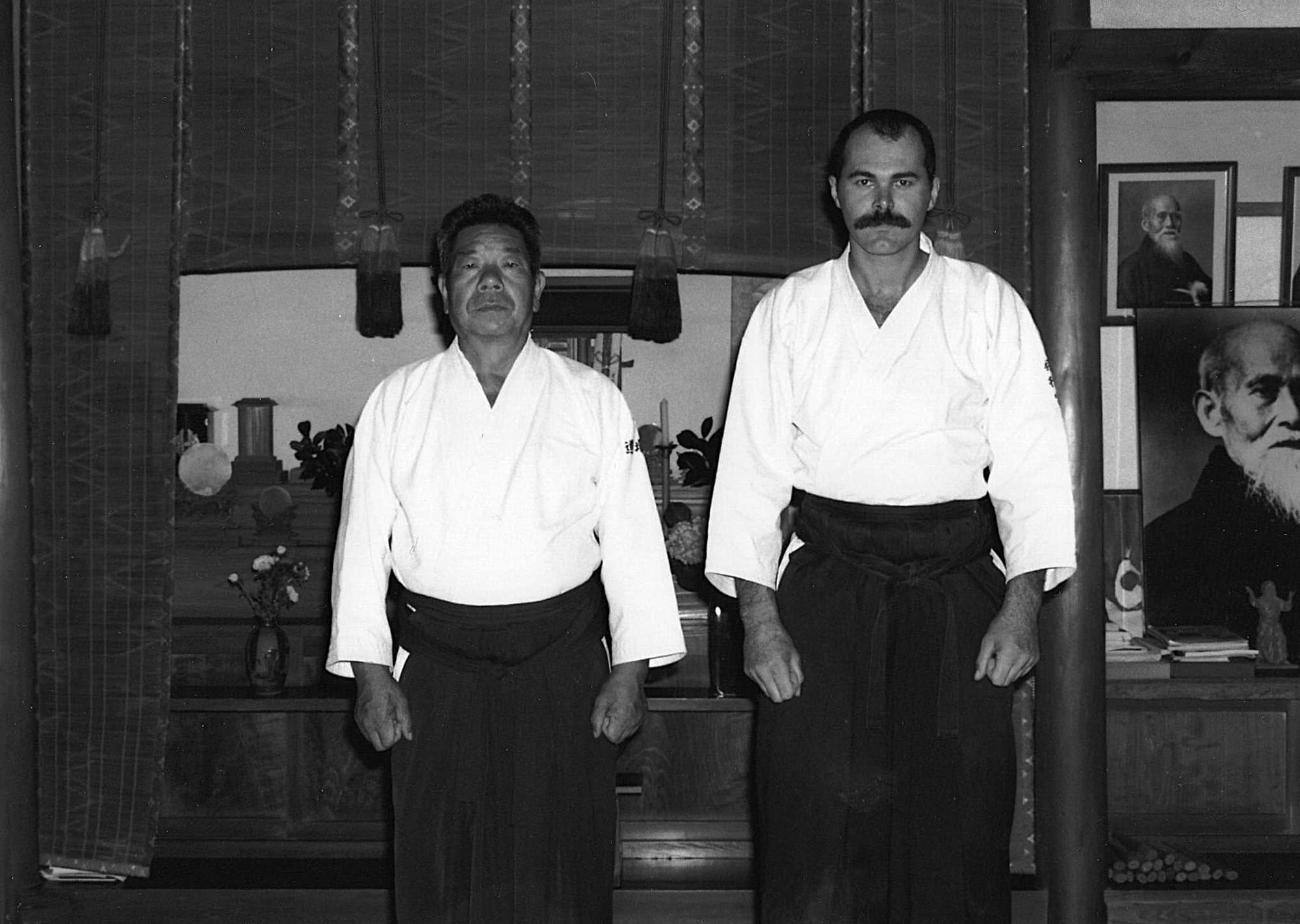
Some of my comrades from Iwama now apply to the Aikikai. At the end of their lives they bow down to receive a rank from young people whom they could be teachers of. Knowledge thus bows down to ignorance, elevating it to a pedestal and strengthening its hold on the world, in the name of a few personal interests. It is pathetic, the great Aiki is not at the end of this road.
Philippe Voarino – Warsaw - 17 March 2025, under the sign of Saint Patrick. Article originally published in January 1996 in Karate Bushido No. 231
Addendum (in 2025)
My master Morihiro Saito Sensei died 23 years ago. That is also the number of years he lived with O Sensei Morihei Ueshiba. This length of time is sufficient for me to reveal today, without fear of embarrassing anyone, what he thought of this ‘Open letter to the Aikikai’.
I would remind you that Master Saito remained loyal to the Ueshiba family until the end of his days. The following document will sufficiently demonstrate that this loyalty was not incompatible with the severe judgement he made of the technical misguidance of Kisshomaru and Moriteru, respectively son and grandson of the Founder Morihei Ueshiba.
This is the letter he sent me (I was living in Belgium at the time) after a few well-meaning people presented him with a Japanese translation of my article, thinking, poor things, that he would be angered by it :

The passage that is of interest to us here is the last paragraph, which reads:
"Your open letter to the Aikikai is a wonderful letter. I am delighted with it. I have made many copies and given them to everyone. My students found it remarkable. Thank you very much for this."
This letter, dated 14 October 1996, is unequivocal, I believe...

